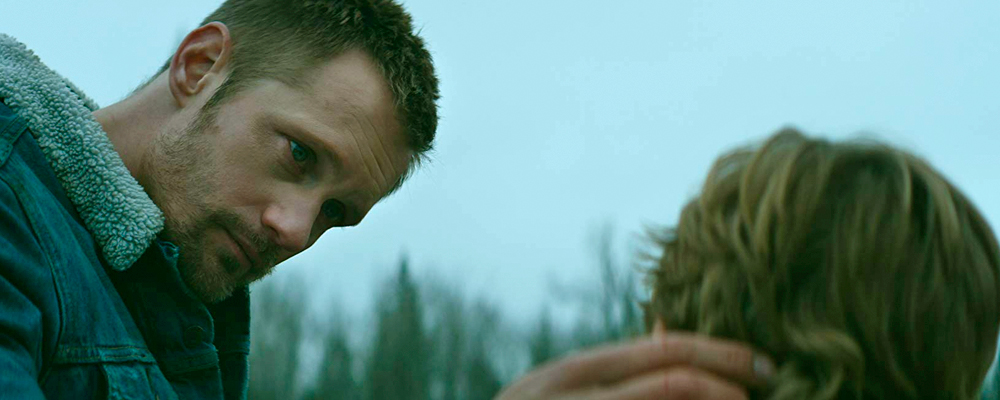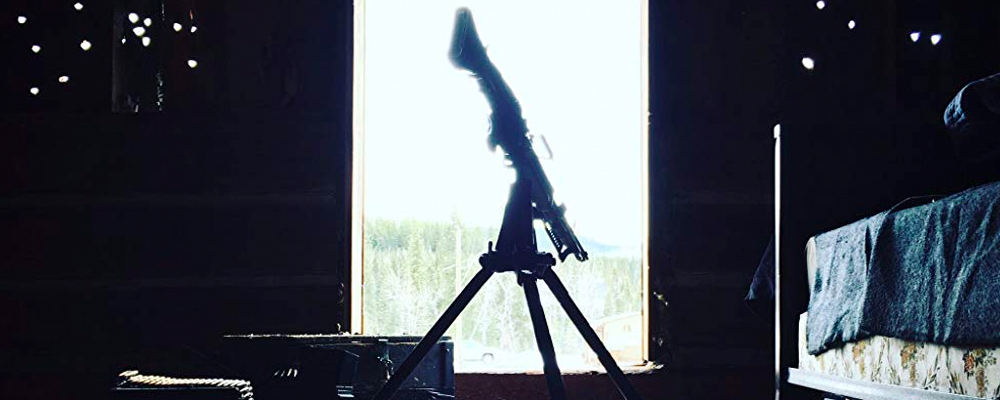‘Hold the Dark’: Netflix Thriller Follows Jeffrey Wright Into Dreary Alaskan Terrain
Alci Rengifo
“Hold the Dark” seems to be about something. Just what, it never bothers to articulate. It asks the audience to sit through two hours of absolute somberness with a few gruesome killings splattered about, some atmosphere and then in the end, emptiness. This Netflix production is the latest offering from director Jeremy Saulnier, who has achieved a small following based on his skillful revenge films “Green Room” and “Blue Ruin.” This time around he’s adapting a novel by author William Giraldi. Funny enough, what’s missing here is precisely the finesse of literary subtext.
Author Russell Core (Jeffrey Wright), is called into the Alaskan wilderness by a young woman named Medora Slone (Riley Keough) whose young son has been taken by prowling wolves. Slone has called Core because he is a nature writer and wolf expert, who has written about killing at least one of the animals. Her request is that he hunt down the wolf that killed her son. Another child belonging to a neighbor has also been taken. Slone’s own husband, Vernon (Alexander Skarsgård), is a soldier in the Middle East. Core sets out to find the wolves but can’t bring himself to do the killing. Upon his return he makes a diabolical find and realizes Slone has disappeared. Just then Vernon returns from war, discovering that his son is dead and wife missing. He goes on a bloody rampage, killing several police officers before he himself is on the run. Now Core finds himself trying to understand the darkness at work in this distant corner of the world, while trying to find the Slones.
Filmed in cold, vast landscapes of ice and forest, “Hold the Dark” primarily succeeds in establishing the setting of its story. Saulnier turns rural Alaska into a place of dread, where people live apart from each other under perpetual grey skies and ink black nights. When Medora Slone invites Core into her home the lighting is almost medieval. Aesthetically we’re reminded of thrillers like “The Girl with the Dragon Tattoo” or “Smilla’s Sense of Snow.” But it is precisely the ambiance which overwhelms and eventually swallows anything resembling a clear purpose. Saulnier succeeds beautifully in crafting a place, but he then does something so typical in current postmodern cinema, he mistakes vagueness for meaning. There is a difference between subtly and pretension.
With a slow burner pace, the film moves from one moment to the other. Characters speak in cryptic language, there’s even an indigenous woman named Illanaq (Tantoo Cardinal), who utters mystical dialogue to Core about dark forces at play. Slone wears a strange wolf mask before lying naked next to Core after encouraging him to go after the wolf who killed her child with dialogue that, when it works, could be worthy of Herman Melville. Up to now this seems like a hunter’s tale, similar to Sean Penn’s “The Pledge,” where Jack Nicholson becomes obsessed with finding a missing girl. But once Vernon returns from Iraq, where he killed a fellow soldier he discovered raping a local woman, the film swerves into a whole new storyline. Vernon goes berserk, killing two police officers outside a local morgue where his son’s remains were being held. His friend, Cheeon (Julian Black Antelope), who also lost a daughter to the local predators, helps him flee before barricading himself in a barn where he begins mowing down more cops with a machine gun. Part of the buried subtext here is the tension between local white authorities and the indigenous community. There are some strong moments where Cheeon snarks at the local cops when they come for him, dismissing their claims that they care for the community. Core is caught between boiling social forces.
The set pieces in this film are well-mounted, especially the moment where Cheeon loses it and starts massacring a squad of police officers. Saulnier shoots violence with a graphic realism but not a morbid eye. He shows us just enough to provoke a reaction, but not too much where it’s just pure gore. An arrow goes through Core’s torso later on, and we feel the pain of having it pulled out. But again, the key question here is what the filmmaker is attempting to say. We learn little to nothing of the characters or their overall motives. We assume the running theme is the darkness hidden in small communities, and the violence of our foreign wars coming back home in the form of disturbed minds like Vernon. Or are we all just wolves in a Darwinian battleground wherever we live? Nothing is ever said clearly either visually or through the drama. In a sense it’s the same challenge directors like Ridley Scott or John Hillcoat have faced when adapting authors like Cormac McCarthy, because the rich descriptions and meanings of literature require a different approach when translated into screen drama. “Hold the Dark” has haunting imagery, much atmosphere and moments of real intensity, but because it assumes we will simply “get it,” we’re just as confused as Core. This is a movie that feels as if chapters are missing and transitions are lost.
By the third act we are following Core to a cave, towards an ending that is meant to leave us shaken. Instead it is more of an enigma in the typical “not everything is as it seems” style. However credit must be given where deserved. The performances in this film are effective. Jeffrey Wright is a haunted man, hoping to see his daughter and estranged wife again after all this madness. Alexander Skarsgård has become skilled at portraying brooding, menacing Nordic types. He paces and stares like a soldier hiding dangerous impulses within.
“Hold the Dark” takes us somewhere convincingly, with performances of stark realism. All it needs is a clearer voice in the wilderness.
“Hold the Dark” premieres Sept. 28 on Netflix.



